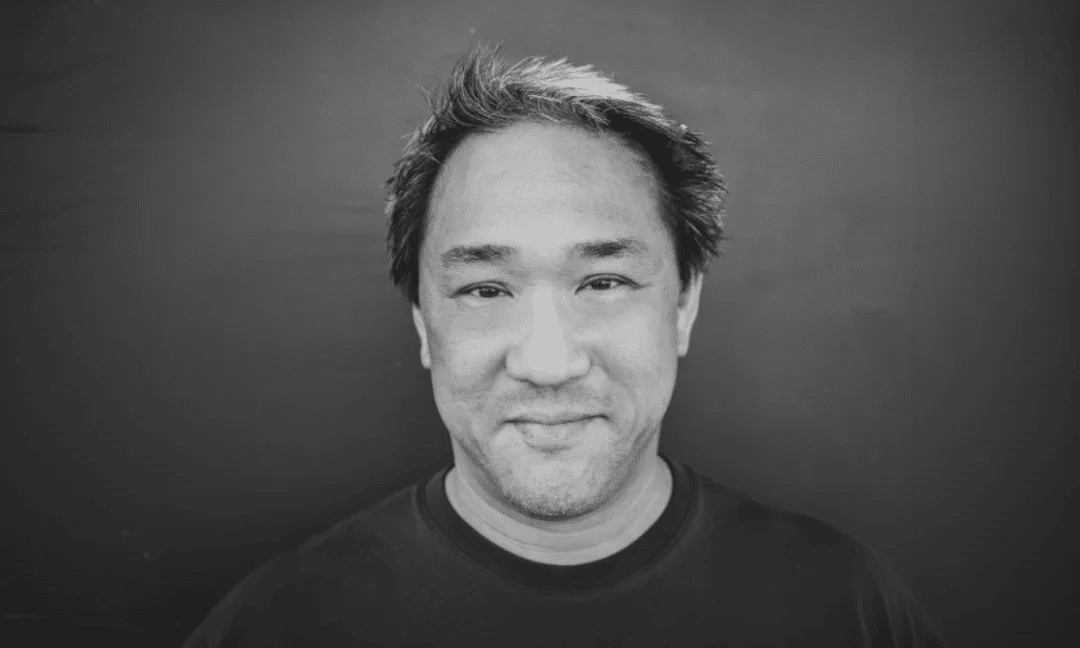
Chikai Ohazama dares to try unexpected paths. He was a technology executive, then founded a gallery, and then became an artist. His Web3 journey is full of curiosity, innovation, and experimentation. He is known for his layered images that blend physical and digital elements, and his latest project Anomalia continues this exploration.
What sets Anomalia apart is not only its form, but also its concept. Chikai invites the audience to break the rules, go against the tide, and reflect on the meaning of existence in parallel dimensions: physical and digital, individual and collective, surface and depth.
In this conversation, we explore the inspiration behind the project, how AI video unlocked creativity that he had not previously touched, and why magic often lies in what you did not ask it to do.
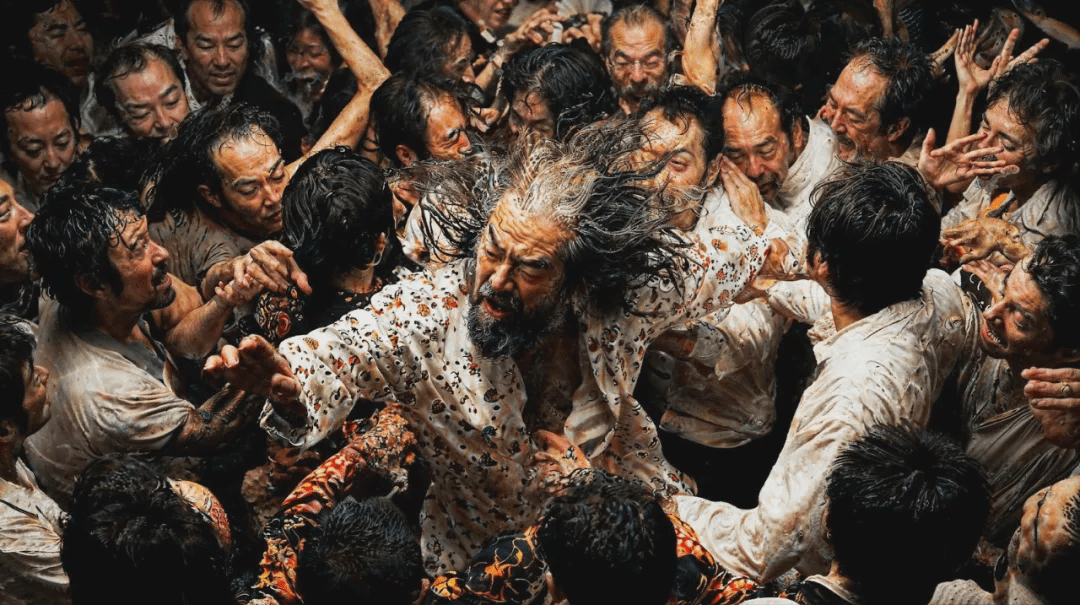
OpenSea: You are about to launch an OpenSea project, please tell us about this project and the inspiration behind it.
Chikai Ohazama: This release is called Anomalia, and it combines physical static prints and digital video collections. The digital part will be released through OpenSea, and the physical prints just debuted at the Hamptons Art Fair last week, which is very cool - it's great to be able to show the work to the audience on site.
It is a two-part work, and I pay close attention to how to handle the physical and digital elements, rather than simply doing a 1/1 or putting things on the screen. I have a unique conceptual structure of understanding these two media.
Thematically, Anomalia explores breaking the rules - whether social norms, trends, or social groups - and saying 'No, I'm going in a different direction'. It embodies the spirit of independent thinking and looking at the world from a different perspective, which may go against what others are doing. This spirit is shown in different ways throughout the work.
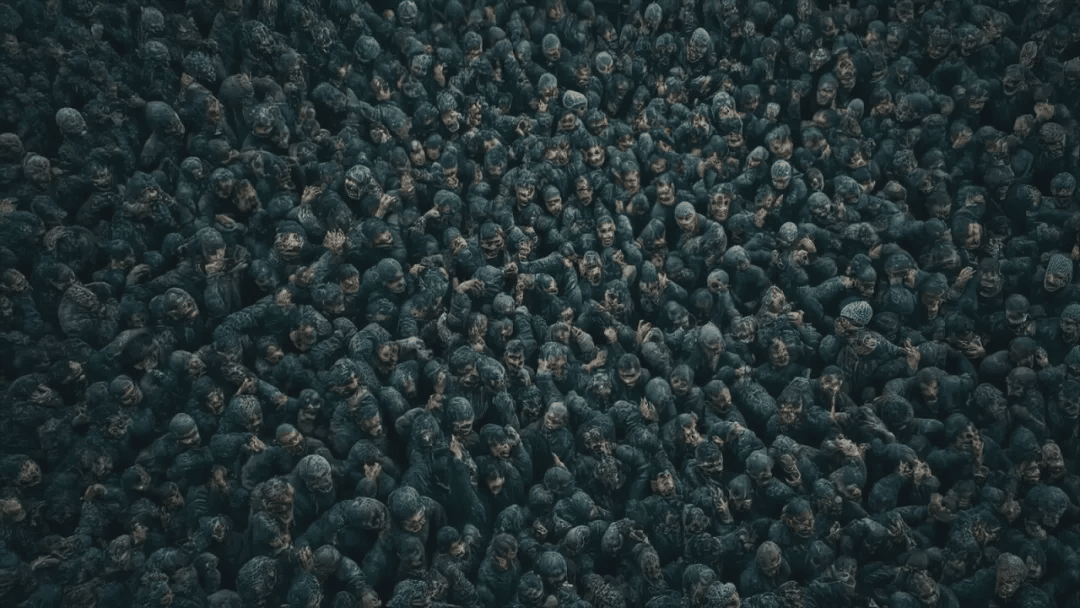
OpenSea: Interesting, do you think this project is consistent with your past work? Or is it more groundbreaking?
Chikai Ohazama: This is definitely an extension. The first series of this style of art was called Panopticon, which was launched about a year and a half ago. It only had 10 works, created at the end of 2023 and released in 2024. The idea is this theme of zooming in and out - you can get both a detailed image and a broader composition in one work. This series sold out in a few days, which was amazing.
After that, I discussed releasing a larger version on their platform with Justin Trimble of Braindrops, which expanded the original concept into a 1-of-500 series based on the theme of scaling.
There is also a small series called Hominis, which is my first attempt to combine physical and digital technology. The series was exhibited in an art gallery in New York at the end of last year. It is another evolution of the same theme. Anomalia extends this theme again - but this time, when you zoom in on the physical work, it doesn't just show more details, it will take you to a completely different dimension.
The larger composition may be the central figure in the crowd, but when you zoom in, you see something completely different - ocean scenes, fish, aquatic creatures. It is a visual metaphor that exists on a completely different plane or parallel universe. This contrast, whether obvious or metaphorical, is the core of this work.
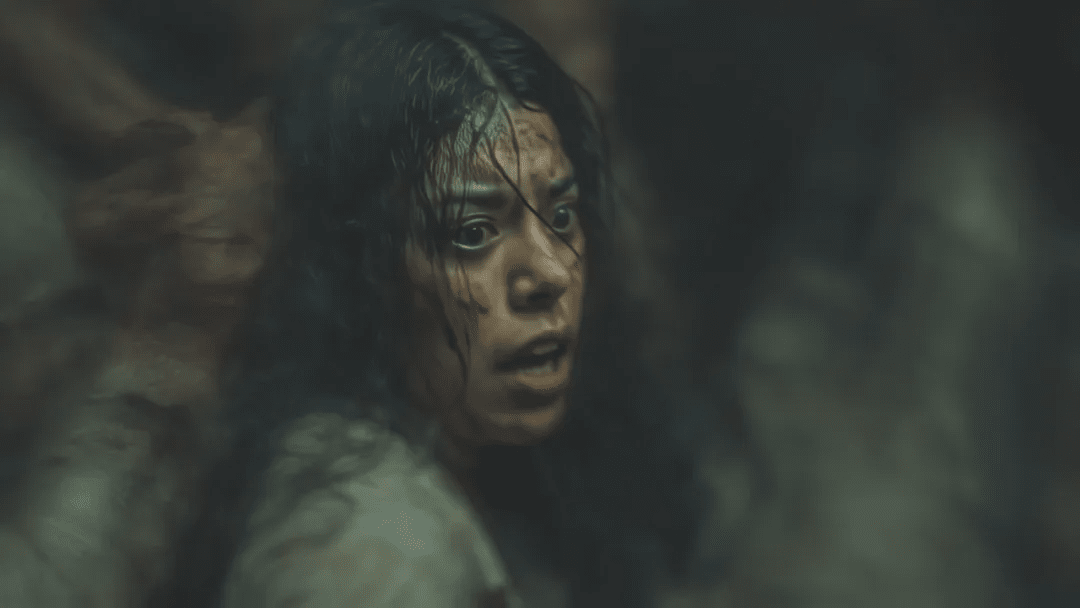
OpenSea: This is a very cool concept. Your work often combines physical and digital elements. How do you see the role of blockchain in it? Are they necessary divisions or two aspects of a whole? What are your reasons for keeping both?
Chikai Ohazama: For me, it stemmed from my desire to deliberately show how my work exists in the real world. In the early days of NFT development, I don't think many artists' works were ever shown, so when a gallery in New York showed their work on a screen, that alone felt like a huge win. They didn't think too much about how the work was presented, they were just excited about the exhibition of the work.
But over time, I started to feel that screens alone could not fully display many digital works. Aspect ratio, resolution, and even viewing experience - are often not ideal, so when I started to consider bringing my work into the physical space, I wanted to carefully design how it was displayed.
I have seen many excellent works by other artists - such as Alpha Centauri Kid's lenticular prints, and Sam Spratt's (Monument Game) and (Masquerade). Their choices are very targeted: 'I want my work to exist in this way in this world.'
I think Avant Arte also does a good job in this regard through their prints and versions, so for me, it's not just about taking a digital image and putting it on a screen, but about expressing the same aesthetics and themes through two forms - just in different ways. For this project, the digital form is video-based, while the physical form is still image.
You can zoom in on the video by zooming in on the screen, and with the physical work, you can get closer and discover new dimensions. The core concept is the same, just presented through different experiences.
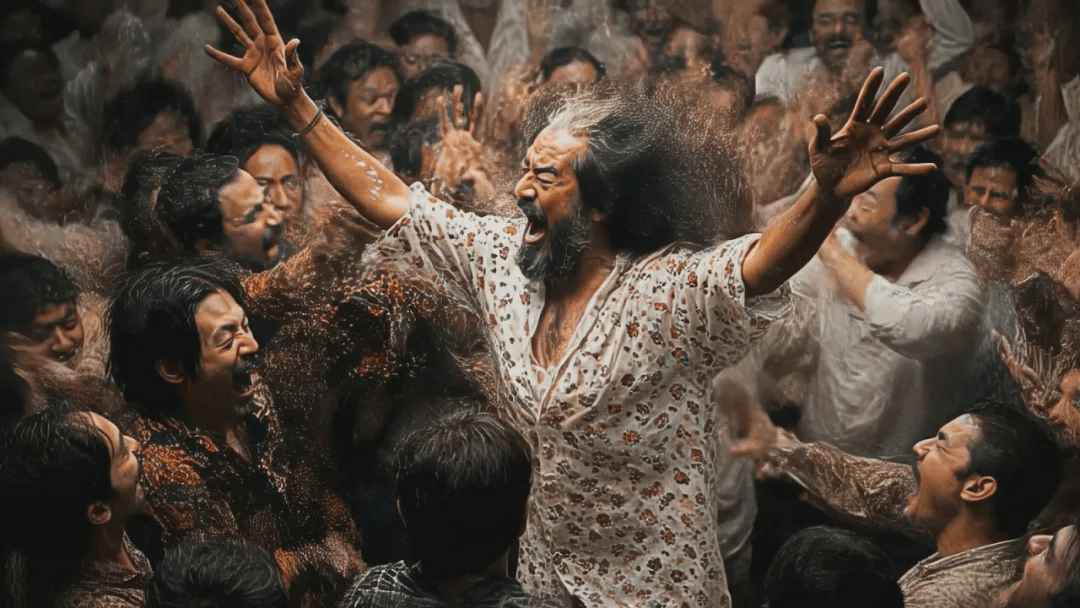
OpenSea: I would love to hear how you got into Web3. Was there a particular moment that felt like a turning point, a moment when you realized 'This is the technology I really want to work on'?
Chikai Ohazama: Yes, I actually entered this field by accident. I never planned to get involved in art, cryptocurrency, or NFT. I never even bought cryptocurrency. I remember seeing something like Nyan Cat sell for $500,000, and I thought, 'What the heck is going on?' It didn't seem very reasonable.
So I started to delve into it, mainly from an artistic perspective. I have always been more interested in art than in the PFP world. As I explored further, I realized that I really like art creation. I started collecting, and collecting is surprisingly social. When you buy something, people will notice, they will celebrate with the artist and collector - that feeling is very warm, I have never experienced anything like this before.
I initially started collecting out of curiosity. Over time, I founded my own gallery called Monolith Gallery, which performed quite well in the early stages of NFT development, especially in photography. But then AI started to rise, and I found myself asking myself again: 'What is this? What am I looking at?'
If I were to collect AI art, I feel like I need to understand it. So I started experimenting with Midjourney and other tools, trying to master this medium. I reviewed GAN and some historical practices. Braindrops did an excellent job of recording this history on the chain.
I don't know when I started creating my own works - not because I was determined to become an artist. To be honest, I never even thought I could do it, but I showed some works to ACK and he said, 'This is good.' This gave me the confidence to continue creating.
Then in the summer of 2023, AI videos really started to become popular. I threw myself into it and my creative desire exploded. Think about it, I think there must have been times when collectors tried to challenge this threshold, but the community would reject them - like 'What is this guy doing?' or 'Is he just trying to make money?' But for me, the community actually accepted me and treated me like an artist, which means a lot to me.
I never thought this would become my identity - the identity of 'artist' now defines me, but this is where I am. I have some creative background - I have written music and directed plays - but that's not why I entered this field.
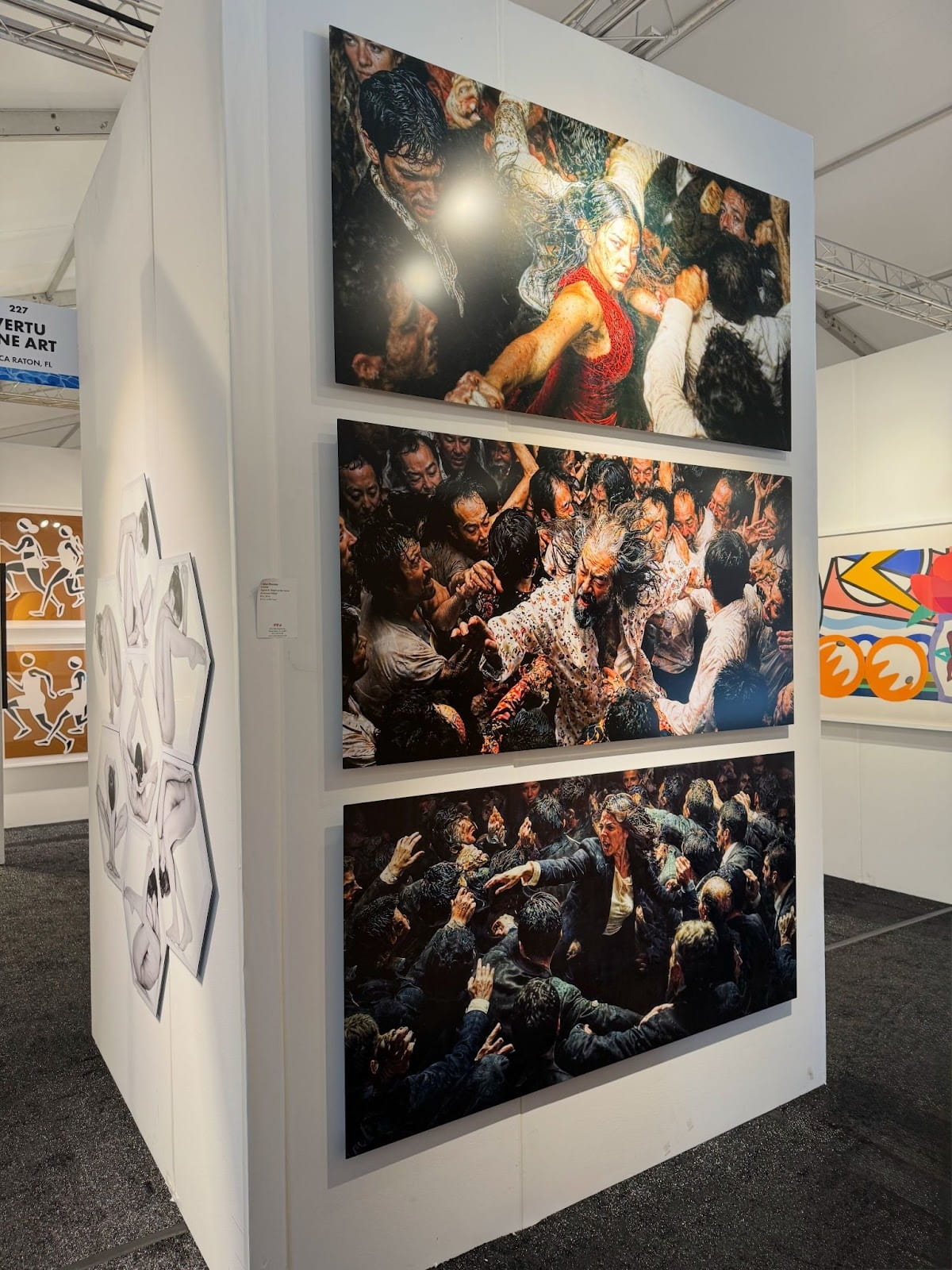
OpenSea: That's really interesting. I was going to ask about your identity transformation, but it sounds like you've always been motivated to create and bring original things into this world, and this just happened to become a new outlet for you to unleash that motivation.
Chikai Ohazama: Yes, I didn't think so before, until I looked back and realized - yes, whether it's music, product design, or theater, it's all part of the same creative thread. AI video has provided me with a way to express myself like never before, but I think it's really successful because AI video has provided me with a way to express myself as an artist that other technologies have never achieved.
I've tried some creative tools before, but none have been as successful as AI video. Secondly, to be honest, I was surprised because the community accepted it.
I fully expected to be rejected - like being asked, 'Who is this person?' There are many collectors who tried to challenge me, but they were all turned away, but somehow people accepted my work, and I am very grateful for that.
OpenSea: AI as a medium is constantly evolving, and tools are everywhere, but having access doesn't mean everyone can create something meaningful. So, how did you choose AI as your medium?
Chikai Ohazama: You know, I think it chose me in a way. AI images are interesting, but they don't really resonate with me - I don't feel like I can contribute anything with them. But when AI videos became popular, it dawned on me that it touched something deep inside me.
I often think of those who are very creative but don't have the time or environment to explore. Life always gets in the way - children, work, or you study other majors. Maybe you want to be an artist, but end up becoming a doctor or engineer, like Grant Yun, who is a doctor but still creates art.
OpenSea: Yes, we discussed this - it's very interesting.
Chikai Ohazama: Right? I think for many people, life doesn't give you the space to explore creativity, but artificial intelligence - especially artificial intelligence video - gives people such an opportunity. Making movies doesn't require a large budget or a large team. You can turn the ideas in your head into reality.
For me, that was a key moment. Technology gave me a window: 'Okay, now you can do it.' I also saw others experiencing the same thing, which inspired creativity in those who had never had a way to express themselves.
OpenSea: You said earlier that the 'magic' of AI often lies in what it can do that you didn't ask it to do. Can you give an example? What things gradually emerged during the design process and eventually became the core of the work?
Chikai Ohazama: Actually, Anomalia is a good example. Some people write very detailed prompts, they use complex frameworks and visual programming tools - build an entire architecture to get very specific results.
My approach is almost the opposite. I start with some very simple words - like 'woman' or 'woman sitting at a desk'. By keeping it vague, I let the AI dream and hallucinate. Once I find the direction I like, I start to improve it. I will delve into this path.
It's largely a process of exploration. I might have a vague idea of the feeling I want - the emotion behind it - and then I'll go through hundreds, sometimes even thousands, of iterations to find something that resonates. So, it’s not about having a specific image in mind, but about chasing a feeling - and then letting the AI help me find it. How do I incorporate that feeling into the work?
It can be very specific - like an event in life or a reaction I have made - but it usually starts with a feeling.
OpenSea: Yes, I think this is how AI works powerfully, it allows you to narrow down your choices and inspire creativity in the process. It will constantly show you different paths as you explore your own path.
Chikai Ohazama: Yes, some tools are definitely better than others in this regard. Some are good at precisely generating your needs, but others are better at creating illusions, which may not be suitable for legal or medical advice, but is excellent for art.
OpenSea: You talked about the transition from collector to creator. How do you see the evolution of your role as creator and collector?
Chikai Ohazama: Good question, I haven't thought about this question for a long time. Monolith has mainly become a place to store and celebrate my collection, a place to show what I bought and why I bought it. People here are too focused on the next wave of new products and the next wave of minting, but they rarely think about what we have already collected, so for me, Monolith has evolved into this.
Can it be sold again? I don't know, it depends on timing, opportunity and the market. There are other ways to explore, but I'm still very active and a collector.
The only reason I am not so active is that you have to be very focused - pay close attention to the declines, trading times, etc. I simply don't have time to make the right offer at the right time. I missed a lot of opportunities, and now you have to compete with funds that have far more resources than I would ever want to deploy.
But I still love art, really love it. Some people like to find bargains - finding the perfect jacket for $5. I've never been that kind of person, but with art, I like this search, finding something that others haven't noticed, finding a treasure that others haven't noticed yet. That excitement has not subsided to this day.
Now I feel that my collection is divided into two lines: one is searching and the other is supporting. NFTs are no longer just art - they are communities, projects, experiments. I want to see some people and some things succeed, such as Roger Dickerman's '24 Hours Art' project. I want it to exist, not disappear.
OpenSea: Is there anything else you would like our readers to know about your upcoming product?
Chikai Ohazama: That's a good question. The structure of this album is very different from what you would normally expect from a physical and digital release, even the way it's released.
Normally, each physical work would receive an NFT, but this time it's different. It contains 15 still images as physical prints, but there are no full-resolution versions of these works in the digital world. Instead, it has a digital version that combines 500 works in one - built from approximately 60 unique source images.
They are thematically related, but not one-to-one correspondence, so I hope the audience can understand this, or even accept it. This is definitely a different way of releasing, and I hope everyone likes it.
OpenSea: Thank you very much for sharing your insights. It was a pleasure talking to you and learning about your creative process.
Chikai Ohazama: Thank you.
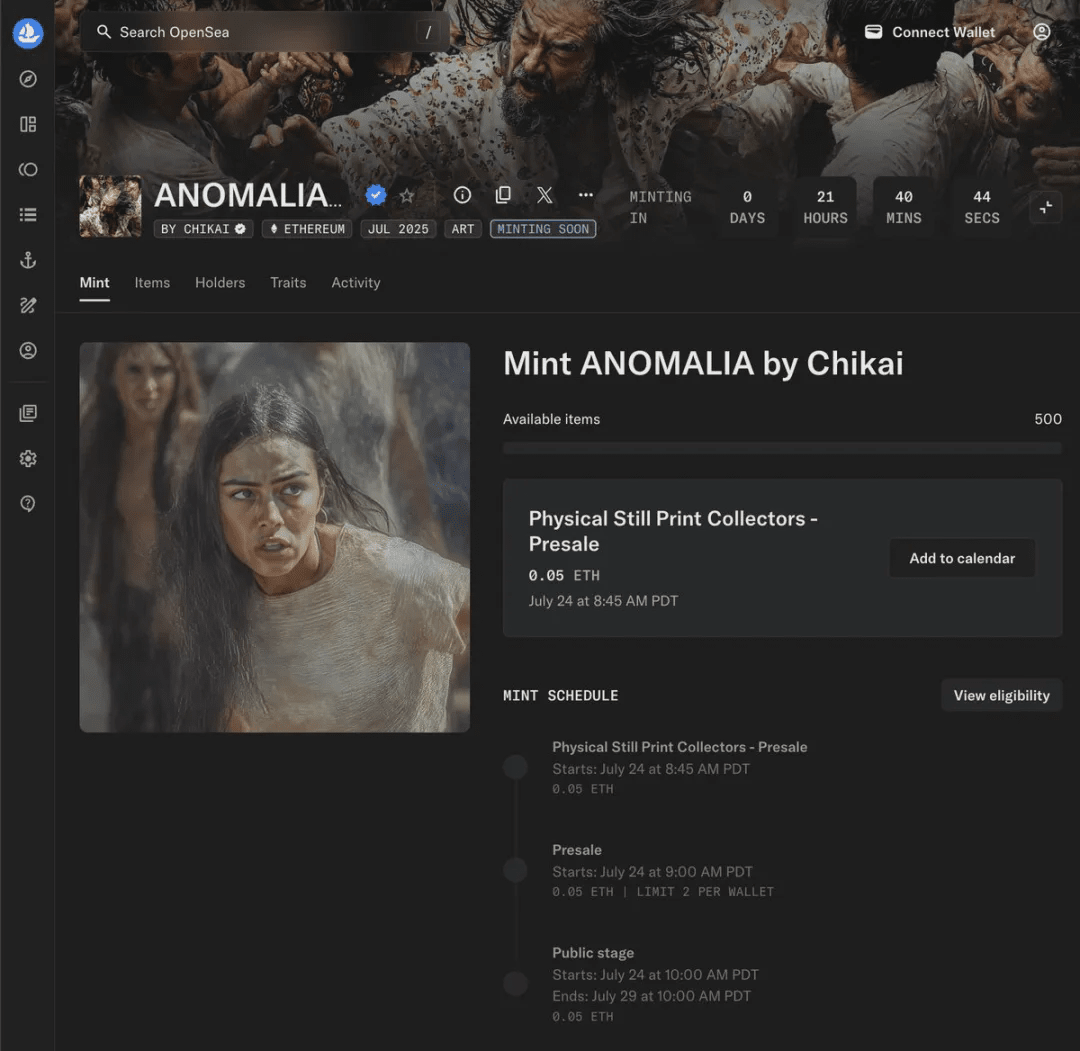
OpenSea content you care about
Browse | Create | Buy | Sell | Auction

Follow collections OpenSea Binance Channel
Stay up to date
